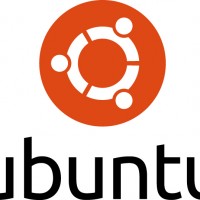Tag: cpu
-

Ubuntu: How to see information about your system’s CPU
To find out information about the CPU used in the system, we can use the following command: lscpu This gives us useful information about the CPU, such as the number of physical cores, virtual threads, virtualization support and more. An example output from a Haswell Xeon system looks like: Architecture: x86_64…
-

How to find number of cores in Ubuntu (or other versions of Linux)?
If you’re using a virtual server (whether online or your own physical machine) it can be handy sometimes to check how many CPU cores are available; here are two easy methods of doing this. The first: nproc This will return a single number, whether it be 1, 2, 4 or otherwise. For…
-

How to see individual CPU core loads in Ubuntu
This is an interesting one – if you have the need to monitor your CPU usage individually across cores it’s actually quite easy with the top command. Simply run top and hit “1” – your output will go from: to: In this case the server is a hexcore (0-5 cores shown, 6…
-
Intel i5-3470 vs i5-3570
The above two CPUs are often shortlisted for entry/midrange gaming builds that aren’t overclocked; so how do they compare? Both are quad-core CPUs without hyperthreading, so they offer 4 cores and 4 threads. The i5-3470 is clocked at 3.2GHz while the i5-3570 is 200MHz faster at 3.4GHz, and both CPUs feature Intel’s…
-
Intel E3-1245 V2 vs. Intel E3-1275 V2
We were asked to spec a customer build the other day who was torn between the above two processors. Here’s our thoughts on them. E3-1245V2: Quad core, 8-thread, 3.4GHz -> 3.8GHz Turbo E3-1275V2: Quad core, 8-thread, 3.5GHz -> 3.9GHz Turbo All other specifications are equal apart from the 100MHz clockspeed difference. At this…
-
Noctua NM-I2011 mounting kits
One of the better tower coolers which fits inside a 4U server chassis is the Noctua NH-U12P SE2, but by default they only ship with Socket 775/1155/1156/1366 and AM2/2+/3 mounting gear – leaving anyone who wants to use the baby Noctua cooler with their Socket 2011-based server out in the cold. Fortunately, Noctua have…
-
Is there any difference between a CPU assembled in Malay and one from Costa Rica?
On the top of any modern Intel CPU you will see the country of assembly printed, and it will be either Malay or Costa Rica. Back in the day this could mean the difference between a chip with excellent overclocking potential and a dud; how about now? In a nutshell, no more difference…
-
Intel’s Socket 2011 vs. 1155/1156 – A size comparison
For those moving from 1155/1156/1366 you might be a little surprised at just how much bigger the new CPUs are; it’s little wonder that they require a twin-lever clamping system on the motherboard. Customer’s old CPU on the right (Intel i7-870, Socket 1156) and their new CPU on the left (i7-3820, Socket…